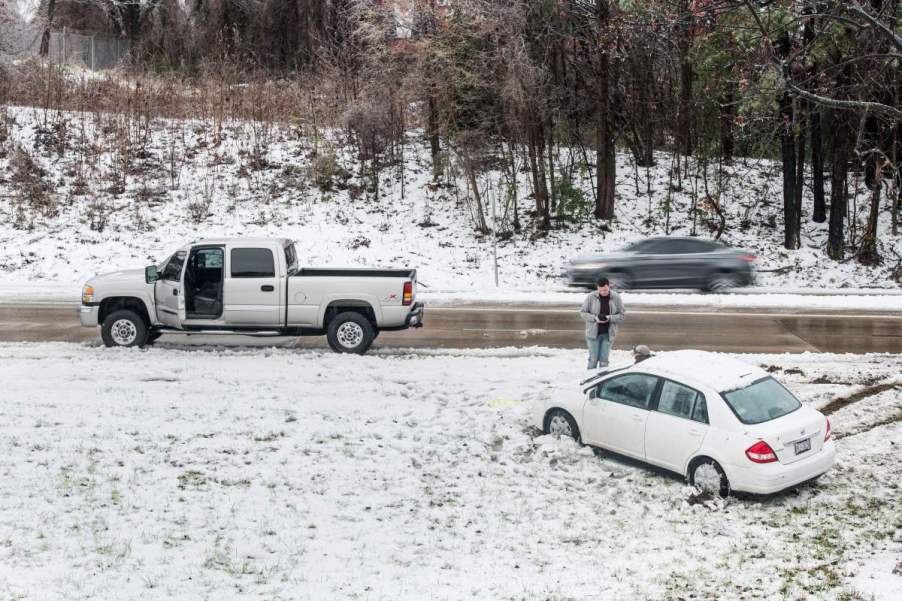
How Does Road Salt Work to Prevent Car Accidents During Winter?
In preparation for winter snow and ice, transportation departments nationwide have stockpiled enormous amounts of road salt. Highway maintenance crews monitor the weather and begin treating roadways before approaching winter storms. It’s no secret that applying salt to icy roads improves car safety. But what is it, and how does it prevent car accidents in the wintertime?
What is road salt?

Road salt shares the same chemical composition as the salt on our dinner tables. However, table salt undergoes a purification process, whereas road salt retains impurities such as iron, aluminum, phosphorous, and lead. These impurities leave road salt brown or gray, in contrast to the bright white we see in table salt.
However, highway departments sometimes use calcium chloride instead of the sodium chloride found in table salt. Although both salts work equally as well, calcium chloride is a cheaper alternative to the more familiar sodium chloride. The downside is that calcium chloride requires three times the amount of sodium chloride.
How does road salt melt ice and prevent slipping?
Road salt lowers the freezing point of water through a chemical reaction. However, this type of salt becomes less effective at melting ice when the temperature drops below 20 degrees Fahrenheit. So, many highway departments mix sand or ash and other chemicals with salt before applying it to roadways.
This multi-pronged approach allows for increased traction on ice-packed roadways, helping to prevent car accidents. While the salt melts the ice with the assistance of the added chemicals, the sand or ash digs in to provide a textured surface.
Sounds great, but what are the downsides of salting roadways for winter travel?
Like most things in life, with the good comes the bad. While melting the ice, road salt also attacks our cars, roadway infrastructure, and environment.
Salt is a corrosive substance that accelerates metal corrosion, eats away at painted surfaces, and attacks your car’s brake and fuel lines if left unattended. Winter vehicle maintenance includes washing and waxing your car before winter arrives. You should also clean your car’s exterior and undercarriage within 10 days after the roadways clear following a winter storm.
Washing road salt off your car before rust sets in is the best defense. In addition, applying an undercoating to your vehicle will protect the undercarriage from corrosion.
Besides damaging automobiles, road salt erodes roads and bridges, causing an estimated $5 billion in repairs annually, Click on Detroit reports. If that’s not bad enough, road salt washed off roadways shows up in rivers, lakes, and drinking water.
The environmental damage caused by salting our roadways includes destroying riparian habitats close to once-pristine streams and causing erosion by killing roadside plants. It also attracts wildlife to roadsides in search of salt and minerals they need for nutrition. Wildlife typically found hidden salt licks in the surrounding countryside. But with miles of salt-saturated roadways, vehicle-wildlife collisions continue to rise.
While other chemicals present safer alternatives, at least in the short term, they are cost-prohibitive. However, some promising long-term solutions loom on the horizon. Agencies are testing porous pavement, which promises to reduce ice accumulation by up to 70%. Solar-powered roadways also hold promise as the technology continues improving. However, the cost savings of decreased salt application must justify solar’s upfront and continued maintenance costs.
What are your thoughts? Does increased winter mobility justify the cost (infrastructure and environmental) of applying road salt? What are the best alternatives, in your opinion?






